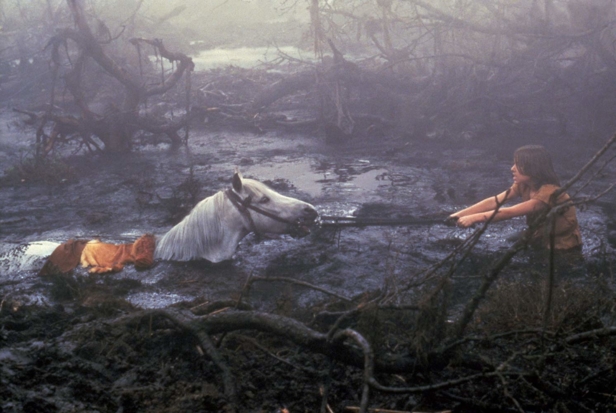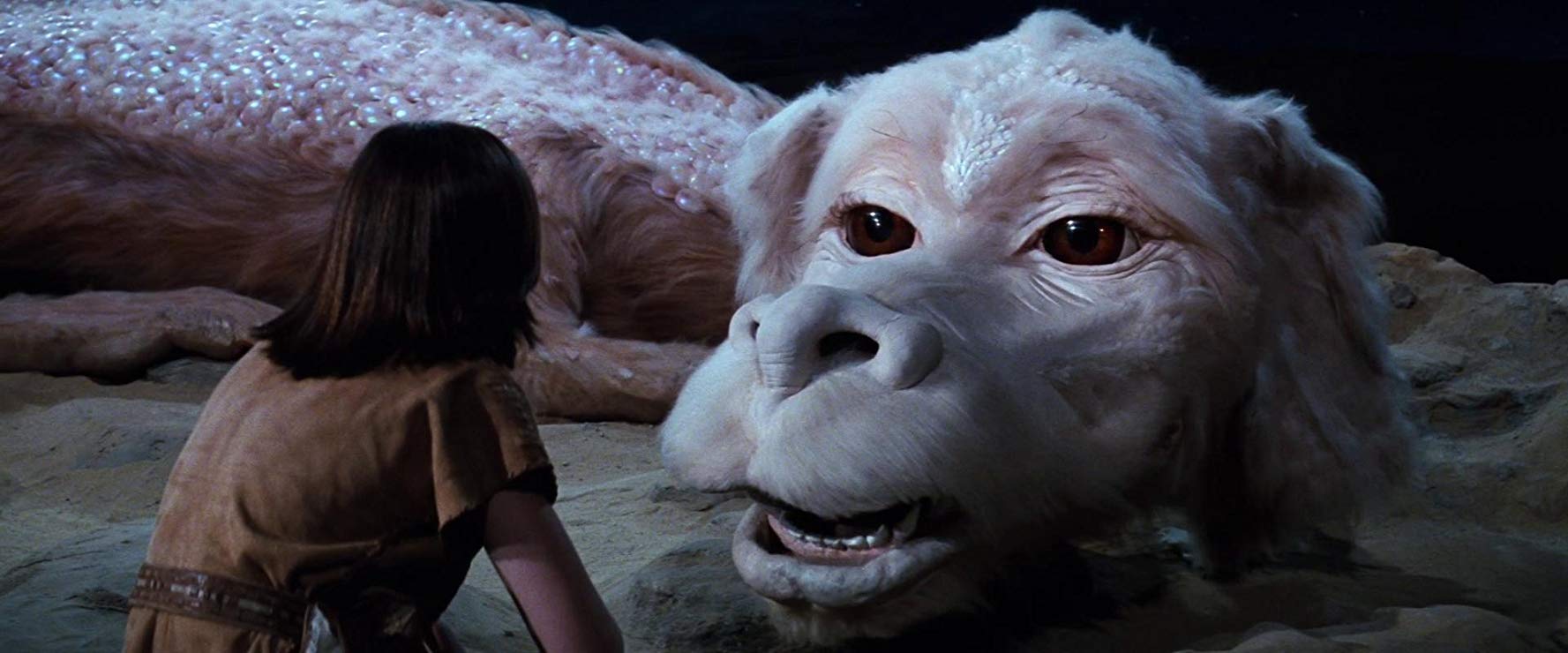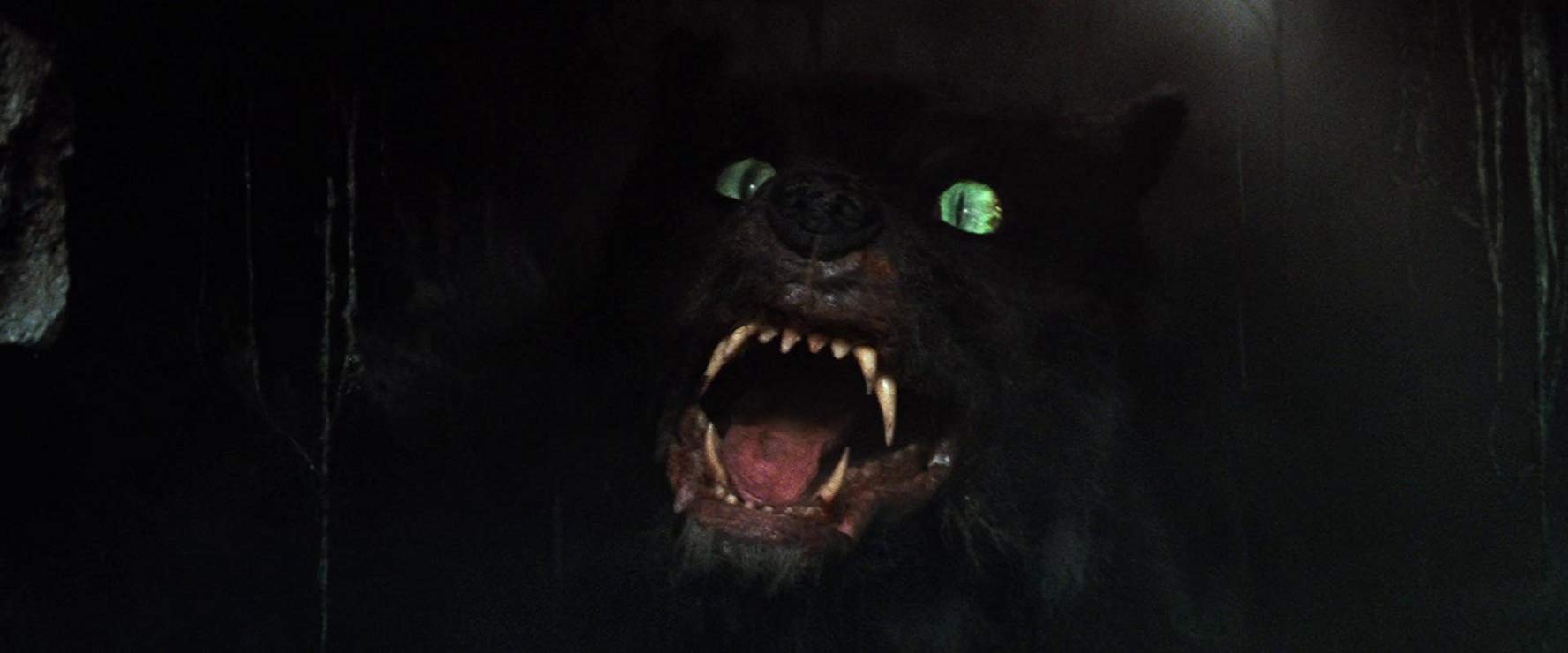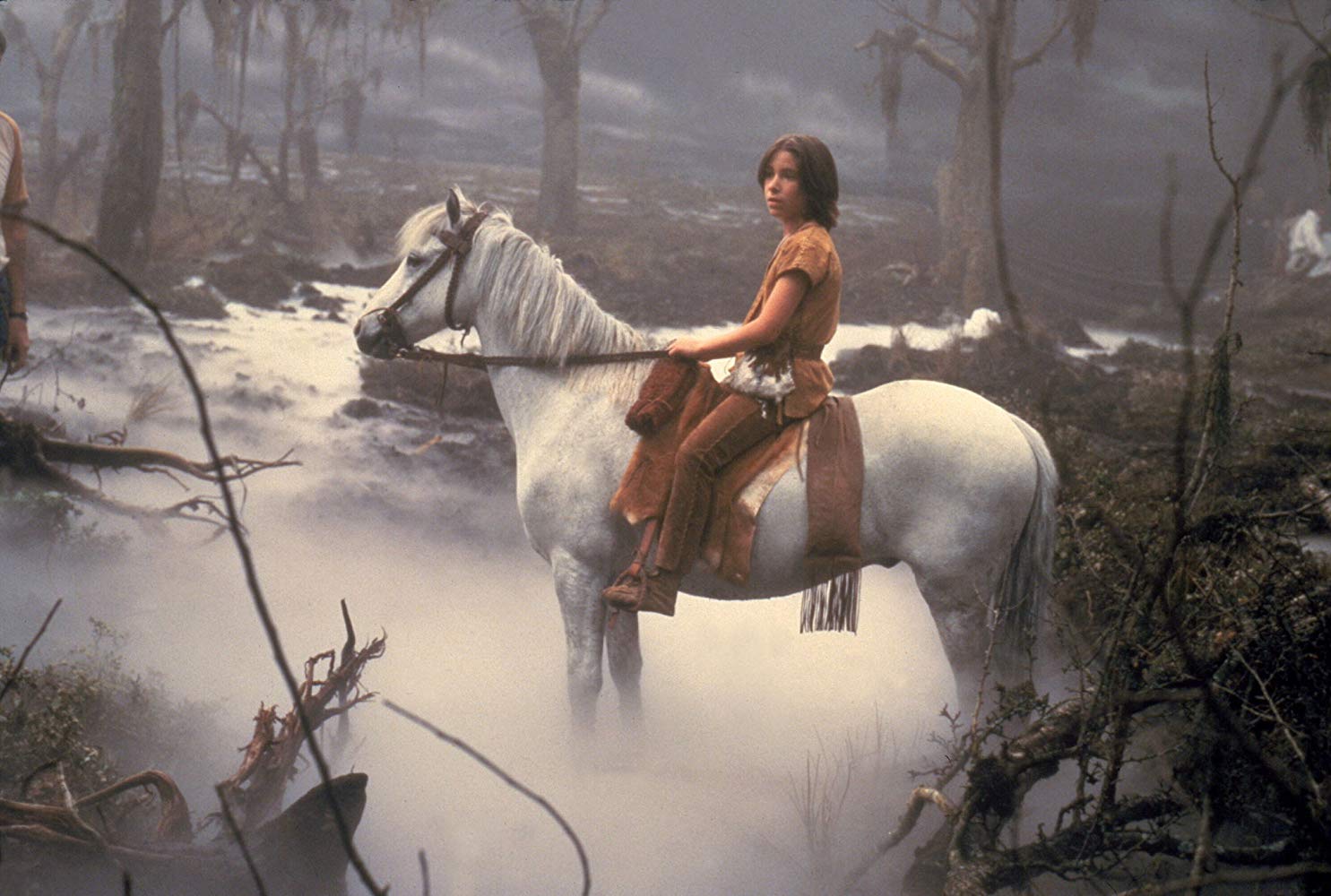These days, it seems like Hollywood can’t get enough grit in their sci-fi/fantasy movies, especially when it comes to younger audiences, but we all know that darkness in fantasy is nothing new. The Eighties saw a stream of films aimed at young people that found their way into children’s hearts and nightmares. Take The Neverending Story: if Atreyu fails in his mission, the universe will be consumed by Nothing and darkness will rule over everything. In case we don’t understand the gravity of the situation, Atreyu’s horse Artax drowns in a muddy bog of despair as his master watches and cries out. It doesn’t get much bleaker than that.
The Neverending Story has much more in its arsenal that darkness, however. There’s a reason why it has become one of the most beloved children’s films of all time: it’s a beautifully realised fantasy with a simple but wonderfully effective core concept and, lest we forget, some truly spectacular effects work. At the time, The Neverending Story, was the most expensive film ever produced in Germany. It was going to be an epic, and the filmmakers knew that they nedded the best in effects to bring Michael Ende’s novel to life. By 1984, Brian Johnson had worked on The Empire Strikes Back and 2001: A Space Odyssey, and had won an Oscar for his work on Aliens. Fortunately for the producers, he was on the lookout for a new project.
“What actually happened was I was negotiating with [Dune producer] Raffaella di Laurentiis to do a picture for her,” he tells SciFiNow. “But when I saw what was up for grabs, I thought, ‘Well, I must pick something else.’ Because I wasn’t a fan of the way Dino Di Laurentiis and Raffaella di Laurentiis made their movies. Dino would ride roughshod over the director and just change everything. And then The Neverending Story came up.”
The film required Johnson to relocate to Germany, where shooting would take place at Bavaria Studios. The budget was set at 60 million DM, which roughly correlated to $27 million. It may have been the biggest0budgeted film in Germany at the time, but the amout was relatively low given what Johnson was used to working with. “It wasn’t a big budget by American standards,” he tells us. “[Filming in Germany] was different, there’s no question abut that. Bavaria Studios had a crew of people, some of them were really brilliant, and others weren’t, but that happens all over the place. But there were certain things that happened that used to make us wonder what was going on.
“We needed a big blue screen, so I designed this, I think it was actually at the time the world’s largest. It was about 95 by 35 feet, and was lit with special lights. We had two made, and had one shipped to Bavaria so we could start setting up things. The plastic that was used was temperature critical, so I had a note sent to all the departments saying under no circumstances during the winter should the stage doors be left open on the big stage because it could possibly damage the screen. So what happens? We put the thing up, and in about the second week of testing I went in and the stage doors were wide open. It was about minus five degrees, and a spark dropped a GOBO, which is a thing you put in front of the light, dropped it straight through the screen and made a huge hole, and that’s before we’d even started shooting. We didn’t know whether that was sabotage or just inefficiency. But in the main it was a great studio with great people, and we got the job done.”
Johnson singles out director Wolfgang Petersen for particular praise. At the time, Petersen might have seemed like an odd choice for a children’s fantasy epic given that his previous film was the intense, claustrophobic submarine drama Das Boot. However, Johnson explains that Petersen trusted him to get the job done. “He was charming, he knew what he wanted, and he left me to do most of the second unit stuff, and the wolf sequence and things like that. He was more interested in the artists and those sorts of things.”
However, there is one of Petersen’s suggestions that Johnson has never been a fan of. Surprisingly, given how iconic he’s become, the director of special effects doesn’t have fond memories of the luckdragon Falkor. “The shaggy golden retriever/dragon, which was Wolfgang’s interpretation, worked fine, but it didn’t really do it for me,” he reveals. “It was huge and it was difficult moving him around; we couldn’t make him walk. In those days it was impossible; now, with computer graphics, it would be a completely different matter.”
Computer graphics may have improved Falkor, but Johnson is quick to stress that CGI could not have had the same effect by itself. “I notice that three-dimensional models are being combined with CGI now, because it does definitely work. All CGI; it’s okay and it serves its purpose, but I like to actually watch what’s on the screen a bit. I’m not a fan of 3D either. Sometimes, the shots are just done for 3D, and they don’t really enhance the production value. It’s production value that we’re aiming for, at least I was; big production value. Big bang for the bucks, and it’s not my money that I’m dealing with; it’s somebody else’s. To just shower money at stuff and say, ‘We’ll do it in post-production,’ which saves a million faces because if you haven’t worked it out for the main unit shoot. You just say ‘Oh, we’ll do that in post-production, it will be alright.’ That’s why you have the CGI credits run on forever.”
Falkor may have been a disappointment to his creator, but it’s a relief to hear that Johnson is still proud of the bulk of the effects work in the film. One of the many aspects that impresses when rewatching the film is how much personality the team managed to bring to the creatures. There’s a story that Gmork actually injured actor Noah Hathaway during their big fight sequence, but Johnson remembers it differently. “We didn’t have any problems with Gmork; not that I can remember. Because Germany is a land full of puppeteers, I got some amazing puppeteers to do all the manipulation; they were really great. That was a lot due to my engineer, who was an Italian guy called Giuseppe Tortora, who was absolutely brilliant with mechanisms, and also the puppeteers, who did have time to practice and everything, but they did get a real feeling for movements and stuff, so that worked out really well, I think.”
The creatures are, of course, the most fondly remembered element of The Neverending Story, but it’s important not to underestimate another challenge of the film: the Nothing. The world of Fantasia is being consumed by this darkness, and it was vital to find a way to depict the ever-advancing, all-encompassing void. “When you read a script and it says there’s nothing, one’s mind takes a few leaps, because you think, ‘How am I going to show nothing?’” laughs Johnson. “It sounds good on the page, but when you actually come down to dealing with it, what is it? So I just had this idea of moving everything like it was all moving into the distance and then breaking up. We did tricks with the cameras so that stuff flew out the sides of the shots rather than onto the floor and stuff like that.”
Luckdragons and wolves aside, there was no way that Petersen or Johnson could get around that old Hollywood maxim, ‘Never work with children or animals’. The film’s two main characters are Bastian (Barret Oliver), the boy reading the book, and Atreyu (Noah Hathaway), the boy who takes on the epic quest. “Well, Barret Oliver was an absolute gem,” Johnson remembers. “He was just the best thing ever. Noah Hathaway was a bit of a pain in the arse, frankly. It was very difficult for Wolfgang to get anything out of him. Barret Oliver delivered all the time; he was just brilliant.”
With the trials and tribulations of filming complete, Johnson and his team might reasonably have felt entitled to a bit of recognition. However, despite the film’s success at the box office, The NeverEnding Story was almost universally ignored when it came to awards season, which Johnson blames on the attitude of the American distributor. “Warner Bros, in their infinite wisdom, didn’t get us a nomination or put us forward, which I think is just a shame, really. [Warner] didn’t really regard it as a movie; they didn’t even get it nominated for Academy Awards. We were shattered about that because they had other pictures nominated that hardly had anything in them. Because the film was made in Germany, I don’t think they thought it was going to be much, but it didn’t turn out like that.”
Indeed, it didn’t. The nostalgia and love for The Neverending Story grows stronger with every passing year, and the film’s effects stand toe-to-toe with the very best of the time. Looking back on the film decades later, Johnson tells us that he’s delighted that it was stood the test of time. “I’m immensely proud of my crew, and I feel very satisfied that what we did on the first one wasn’t eclipsed by the second or third, frankly. We tried really hard, and we did a pretty good job.”
This article first appeared in SciFiNow issue 90.
The Neverending Story is out now on DVD and Blu-ray.



